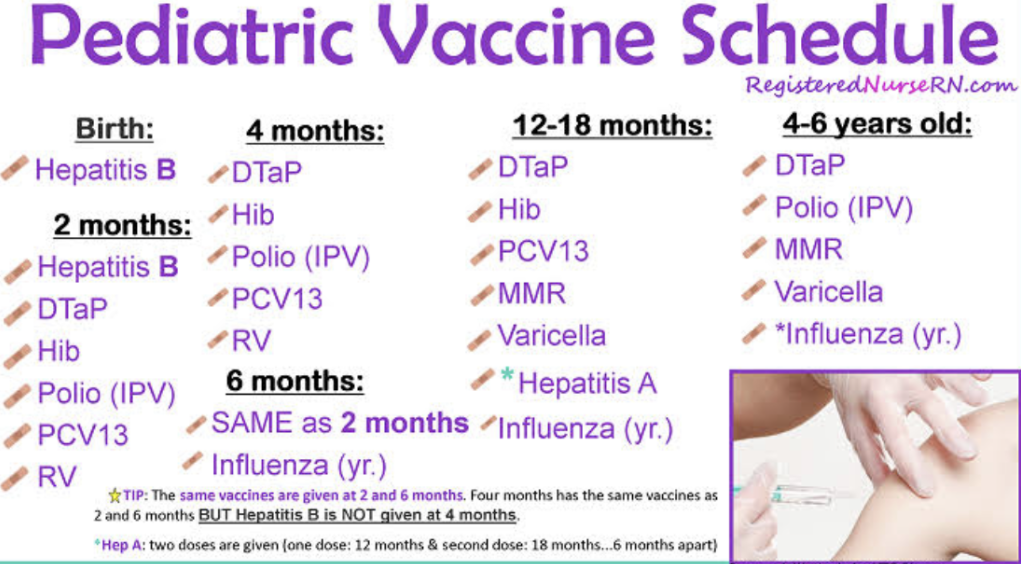IMMUNIZATION SCHEDULES: NCLEX TIPS FOR PEDIATRIC VACCINATION GUIDELINES

Introduction:
Navigating the world of pediatric immunizations can feel like trying to assemble a jigsaw puzzle without the picture on the box. Yet, for nursing students gearing up for the NCLEX, mastering these schedules is crucial. Not only do they safeguard children’s health, but they also form a significant chunk of pediatric nursing care. Let’s dive into the essentials of pediatric vaccination guidelines, sprinkled with some NCLEX-specific tips to make your study sessions a tad more enjoyable.
The Significance of Immunization Schedules:
Think of immunization schedules as meticulously crafted blueprints. They’re designed to arm children with immunity at the most opportune moments in their development. By sticking to these timelines, we ensure kids get vaccines when they’re most effective, slashing the chances of preventable diseases. For your NCLEX prep, it’s essential to grasp both the timing and the rationale behind each vaccine.
Key Vaccines and Their Schedules:
The Centers for Disease Control and Prevention (CDC) offers a comprehensive immunization schedule for children and adolescents. Here’s a snapshot of some core vaccines:
• Hepatitis B (HepB): Administered in three doses: at birth, 1-2 months, and 6-18 months.
• Diphtheria, Tetanus, and Pertussis (DTaP): A five-dose series given at 2, 4, 6, and 15-18 months, with a final dose at 4-6 years.
• Haemophilus influenzae type b (Hib): Typically a four-dose series at 2, 4, 6, and 12-15 months.
• Inactivated Poliovirus (IPV): Administered at 2, 4, 6-18 months, and 4-6 years.
• Measles, Mumps, and Rubella (MMR): Two doses given at 12-15 months and 4-6 years.
• Varicella (Chickenpox): Two doses at 12-15 months and 4-6 years.
• Pneumococcal Conjugate (PCV13): Given at 2, 4, 6, and 12-15 months.
• Rotavirus: Depending on the vaccine brand, administered in either a two-dose series at 2 and 4 months, or a three-dose series at 2, 4, and 6 months.
NCLEX Tips and Mnemonics:
Memorizing these schedules can be daunting, but a few handy mnemonics can make the task less intimidating:
• At Birth: Think “B” for Hepatitis B.
• 2, 4, and 6 Months: Remember “Dr. HIP”: DTaP, Rotavirus, Hib, IPV, PCV.
• 12-15 Months: Use “I’m HPV”: IPV, MMR, Hib, PCV, Varicella.
• 4-6 Years: Recall “Very DIM”: Varicella, DTaP, IPV, MMR.
These mnemonics can serve as mental shortcuts, helping you recall which vaccines are due at various stages.
Practice Questions:
1. A 4-month-old infant is scheduled for vaccinations. Which of the following vaccines should the nurse prepare to administer?
• A) MMR
• B) Varicella
• C) DTaP
• D) Hepatitis A
Answer: C) DTaP. At 4 months, the DTaP vaccine is part of the recommended immunization schedule.
2. At what age is the first dose of the MMR vaccine typically administered?
• A) 2 months
• B) 6 months
• C) 12 months
• D) 4 years
Answer: C) 12 months. The first dose of the MMR vaccine is usually given between 12-15 months of age.
3. Which vaccine is recommended to be given at birth?
• A) Hepatitis B
• B) DTaP
• C) Hib
• D) IPV
Answer: A) Hepatitis B. The Hepatitis B vaccine is typically administered within 24 hours of birth.
4. A child is due for their 4-6 year vaccinations. Which combination is appropriate?
• A) DTaP, IPV, MMR, Varicella
• B) Hepatitis B, Hib, Rotavirus
• C) PCV13, MMR, Hepatitis A
• D) DTaP, Hib, IPV
Answer: A) DTaP, IPV, MMR, Varicella. These vaccines are recommended between 4-6 years of age.
Conclusion:
Mastering pediatric immunization schedules is a pivotal aspect of NCLEX preparation. By understanding the timing and purpose of each vaccine, and employing helpful mnemonics, you can confidently navigate this topic. Remember, these schedules are designed with the child’s best interest at heart, ensuring they receive protection when they’re most vulnerable. Happy studying, and may your NCLEX journey be as smooth as a well-administered vaccine!






